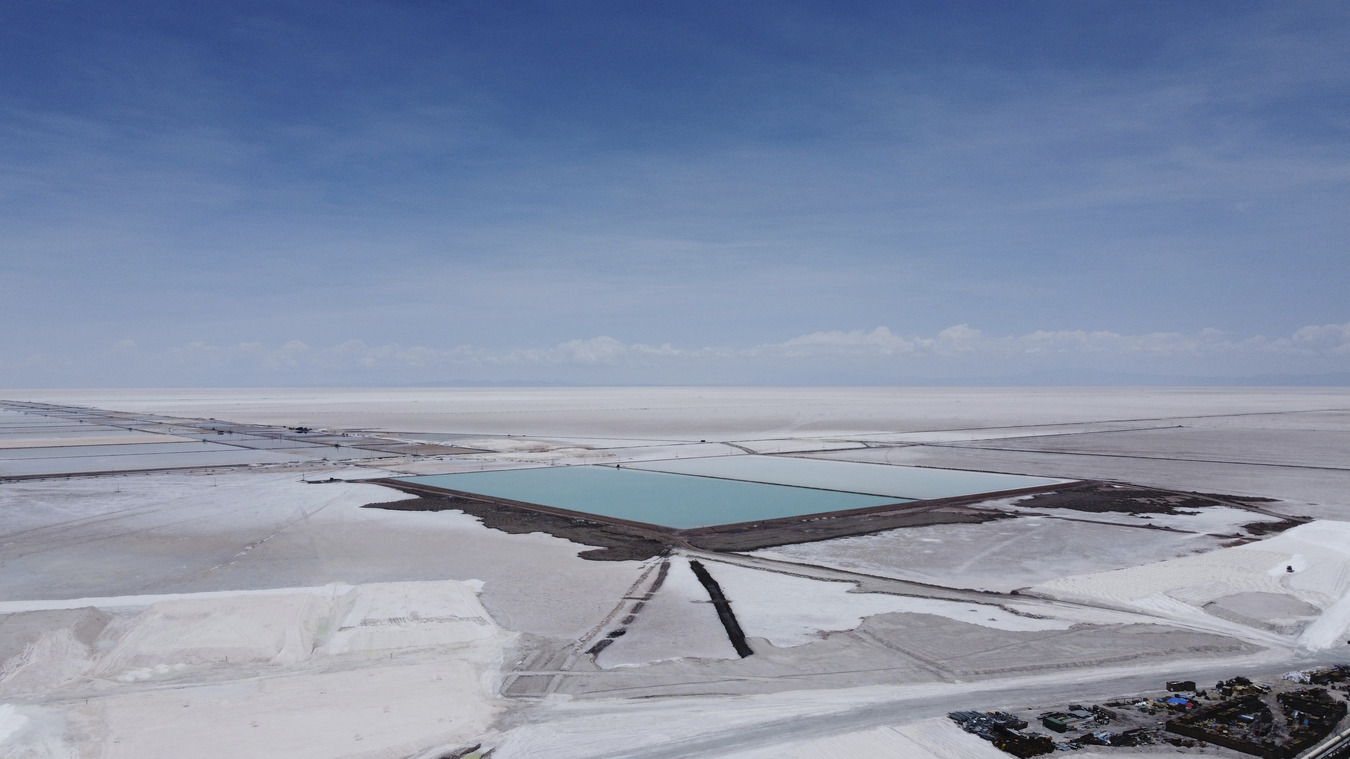Putting "Sustainable" Before "Energy": Biofuels in a Sustainable Energy Future
Putting "Sustainable" Before "Energy": Biofuels in a Sustainable Energy Future
John Sheehan, a senior strategic analyst at the U.S. National Renewable Energy Laboratory, analyzes the long-term limits of greater biofuel use. Alternative energy topped the agenda at recent meetings between U.S. President Bush and Brazilian President Luiz Inacio Lula da Silva.
Coming to Terms with Sustainability
These are the best of times and the worst of times for energy. On the one hand, the future of our energy supply—especially petroleum—has never seemed more uncertain. On the other hand, rarely have we been handed an opportunity like the one we have before us to set a whole new course for sustainable energy production and use.
But what do we mean by "sustainable?" The United Nations defined "sustainable development" as meeting "the needs of the present without compromising the needs of the future generations." This idealistic definition doesn’t capture the tough issues. I prefer world-renown biologist E.O. Wilson’s more comprehensive, but decidedly Malthusian, definition:
"The common aim must be to expand resources and improve quality of life for as many people as heedless population growth forces upon Earth, and do it with minimal prosthetic dependence. That, in essence, is the ethic of sustainable development."
I have highlighted the words that capture the key aspects of sustainable development. They represent—for me—the organizing principles that underlie sustainable choices.
The Second Coming of Biofuels
In the United States, interest in biofuels has not been this high since the Carter Administration’s push for "gasohol" in the late 1970s. For two years running, President Bush has made biofuels a major element of his State of the Union address. And he has now made biofuels a centerpiece in his efforts to strengthen ties between the United States and Latin America.
Last month, the Presidents of Brazil and the United States signed an accord spelling out areas of cooperation for the development and standardization of biofuels globally. This past weekend, Brazil’s President da Silva met again with President Bush at Camp David to follow up on this agreement.
On the surface, this is a very positive development. Brazil and the United States together represent over 70 percent of worldwide ethanol production. And so it makes sense that they should join forces. But, the devil is in the details. Let’s apply the principles of sustainable development to better understand the opportunities and issues that face the growing biofuels industry.
Expanding Resources—the Limits of Biofuels
Today, the biofuels industry is experiencing what former U.S. Federal Reserve Chairman Alan Greenspan would call "irrational exuberance." The amount of investment and projected growth in biofuels both in the U.S. and Brazil is astounding.
Capacity for ethanol production in both countries could easily double in just the next few years. In the United States, planned capacity additions would bring total corn ethanol production up to 12 billion gallons per year, according to the Renewable Fuels Association. Can U.S. farmers sustainably supply enough corn for an industry this size? It’s very hard to say. The National Corn Growers’ Association recently estimated that the upper limits for corn ethanol production might be between 13 and 18 billion gallons per year. We may already be reaching the end of our rope as far as U.S. corn is concerned.
Likewise, the U.S. biodiesel industry reports that planned capacity additions could raise the capacity of this fledgling industry to over 2.5 billion gallons per year. I estimate that, if all of the U.S soybean production in 2004 had been devoted to biodiesel production, it would amount to around three billion gallons per year. Clearly this industry is not on a sustainable trajectory.
Even if we can sustain this amount of growth in the existing biofuels industries, we will barely put a dent in the U.S. demand for petroleum.
So, have biofuels failed the sustainability test? No. Part of the agreement signed between the United States and Brazil included development of alternative sources of biofuels. This is critical. The Pew Center for Climate Change recently estimated that, in the United States alone, the energy contained in alternative forms of biomass—such as trees and grasses—could represent somewhere between 30 and 80 percent of current U.S. on-road demand for transportation. In the long run, any hope for sustainable and substantial supplies of biomass lies in the successful development of new technologies that can efficiently convert it into fuel.
Wilson’s admonishment to achieve sustainable development with "minimal prosthetic dependence" is a plea for avoiding a technology house-of-cards. The key to success with these technologies is simplicity and efficiency. The challenge for new biofuel technologies is to reach the same kind of efficiencies that today’s petroleum refineries have attained. But remember—the petroleum industry has had over one hundred years to get to this point. Research and development must stay focused on this simple but difficult objective.
Quality of Life—the Economics of Biofuels
Energy is foundational to all economies. If biofuels technology is to improve quality of life for all nations, it will need to provide fuels at prices that are not burdensome. A recent consortium of U.S. experts set cost targets for cellulose ethanol that are almost twice as aggressive as those set by the U.S. Department of Energy. We need to aim high if we want biofuels technology to play a sustainable role in our energy supply.
The Earth—a Life Cycle Perspective on Biofuels
Biofuels are often touted as "environmentally friendly." But no new opportunity comes without trade-offs. A consideration of the impacts of biofuels from the farm to the vehicle reveals both good news and bad. First, the good news: Ethanol made from corn, sugarcane or cellulosic biomass has the effect of dramatically reducing oil consumption—on the order of 95 percent less per mile driven on ethanol versus gasoline. In terms of greenhouse gas emissions, sugarcane and cellulosic biomass offer large savings, while corn ethanol offers only modest savings. Thus biofuels offer an opportunity to tackle climate change and energy security at the same time.
On the downside, farm operations can add substantially to nitrogen emissions in both air and water—far more on a life cycle basis for ethanol than for gasoline. Then, there is the question of water demand. New cellulose ethanol technology is projected to use around five gallons of water for every gallon of ethanol produced, while corn ethanol is reported to use anywhere from two to 10 gallons of water per gallon of ethanol. Soil erosion and reduced soil fertility are also potential problems that could cause serious harm, unless we take steps to ensure the use of sustainable farming practices. Without finding ways to mitigate impact, these issues could be real showstoppers.
The Ethic of Sustainable Development
What makes sustainable choices so hard is the fact that they are deeply rooted in ethical and political choices as well as technical choices. Biofuels have run right up against these ethical dilemmas. The growth in the corn ethanol industry has led to an unprecedented rise in corn prices—sparking demonstrations in Mexico City. These high corn prices have put the spotlight on the greatest ethical question we face with biofuels—how to balance the use of our land to meet both food and energy needs. Fidel Castro’s first public statement since he became ill was a tirade on the potential of biofuels to create food and water shortages. The competition for natural resources—particularly land and water—is a very real issue that we must be prepared to deal with from the outset as we move forward with biofuels.
John Sheehan is a senior strategic energy analyst at the National Renewable Energy Laboratory in Golden, Colorado. He has authored several groundbreaking life cycle assessments of biofuels technology.








